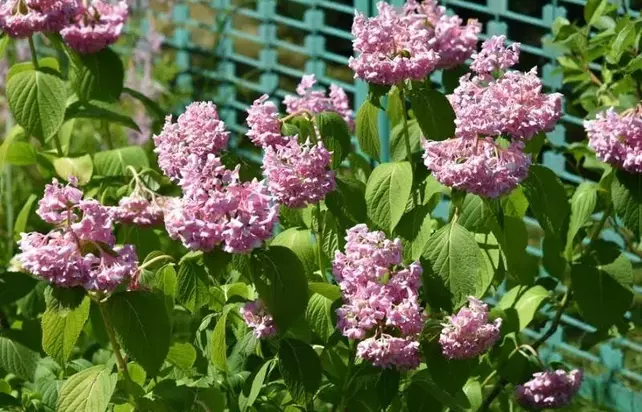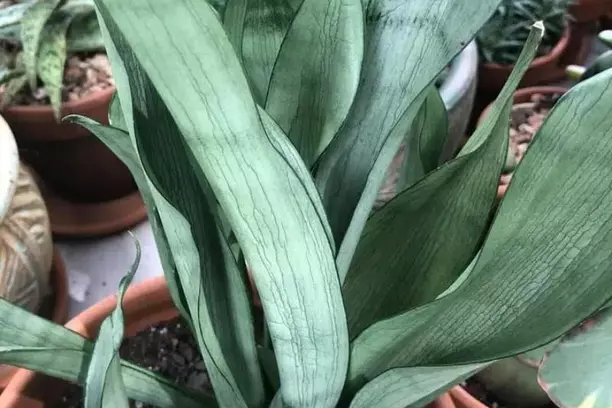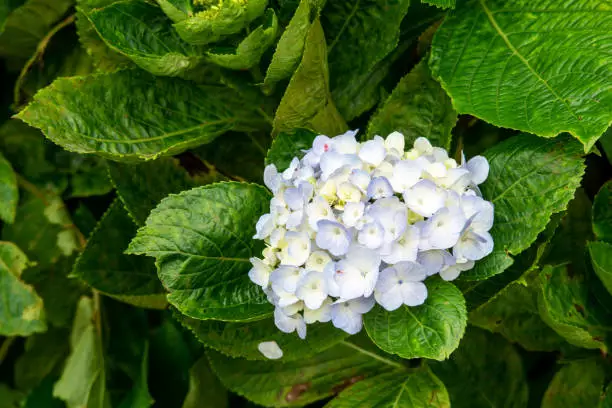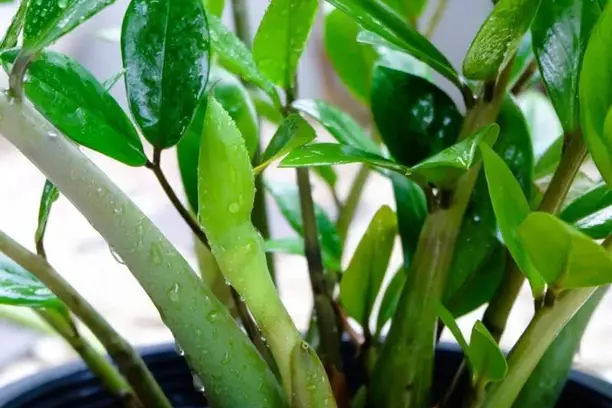Gardening is one of the most common domestic practices in the world. Millions of people around the world invest large amounts of time in growing and cultivating plants both as a hobby and as a serious professional interest.
This article will address several things you should know when you’re preparing to start a garden. We’ll talk about various important procedures, such as the correct way to plant a plant or some of the more innovative types of gardening out there.
RELATED: BEGINNER’S GUIDE TO BACKYARD GARDENING
How to plant a plant
This first section addresses the correct way to plant a plant. If you’re not sure about how you should be planting your plants, keep reading.
First off, you need to evaluate the amount of sun your plant will be getting depending on where you’re planning to plant it. The four different types we’re mentioning, for the sake of clarity, are full sun, shade, afternoon sun only, or morning sun.
The good news is that if you get the sunlight requirements for a plant right, it’s likely that you’ll remove nearly half of any disease or insect problems that the plant may be prone to.

Another thing you need to decide is the size of the plants you’ll be planting.
If you’re planning smaller plants, the planting area should be covered with the right amount of soil amendment. If you do so, the native soil and the additive you need to add can be mixed as the holes are being dug.
RELATED: FAB GARDENING TIPS FOR A SMALL YARD
On the contrary, if you’re planting large plants, you can add the amendment directly to the soil surface.
Now let’s get to the actual planting process.
First off, dig a hole in the ground where you want to plant your plant. The hole needs to be bigger than the root ball. Also, make sure to loosen the soil at the bottom of the hole.
Next up, place the root ball in the soil. Make sure that it’s close to the top level of the soil. Once that’s down, proceed to push the root ball down until there’s a good amount of soil around it.
You don’t want to push it too hard, but do remember that it’s going to be getting its nutrients from the soil, not air, so if you plant it too loosely, it may miss out on a lot of growth.
Lastly, you’ll have to keep watering the plant periodically. If you’re planting it in a hot environment, you’ll have to keep watering it regularly to ensure proper growth and development.
Keep checking the soil closest to the plant every other day to make sure that it isn’t dry.
Planting a plant is one of the most basic yet important elements of the gardening process. This is the first step most aspiring gardeners engage in when they’re starting out. It’s as fundamental to gardening as frying meat is to a fry cook.
If you follow the steps and guidelines we’ve mentioned above, you’ll be planting plants the right way very soon.
What is urban gardening
In this section, we’ll take a quick look at what urban gardening is, why it’s popular, and a couple of other considerations.
As the name suggests, urban gardening is the practice of growing plants of several different varieties in an urban setting.
As we’ve started to garden in strictly urban settings, we’ve invented several unique gardening concepts to best facilitate plant growth and development in closed, tight-knit spaces.
Let’s take a brief look at some of the most popular urban gardening concepts.
Container gardening
This is a form of gardening where plants are grown in various containers and boxes such as buckets, watering cans, or even old tires. This form of urban gardening is ideal for people with small balconies or yards.
Community gardening
This urban gardening practice involves the use of public or private shared spaces where different people can come together and garden as a community.
Indoor gardening
This method is common among people who don’t have yards or patios — such as people who live in close-knit apartments or flats. It involves planting indoors, usually in containers, or maybe even indoor greenhouses or sunrooms.
Greenroofs
Greenroofs, or roofs that have a place to grow plants, fruits, and vegetables, are also a very popular way to garden, especially considering the fact that most roofs get a good amount of sunlight consistently.
Guerilla gardening
This is a comparatively subversive kind of gardening where the gardener gardens in places that he doesn’t own such as an area with dirt or a parking lot.
Of these gardening types, urban gardening has several benefits for the whole community. Some of those benefits are as follows:
- Helps brings communities and families together, creating more solidarity
- Adds green spaces to cities with heavy urbanization and industrialization
- Mitigates the urban heat island effect
- Helps in preventing soil erosion
- Provides a healthy, organic food source
- Helps in filtering rainwater
- Educates urban children about the origins of food
- Creates recreational spaces where people can learn, work, and entertain themselves
RELATED: URBAN GARDENING 101: TIPS & GUIDES FOR BEGINNERS
What is organic gardening
Now we’ll look at what organic gardening is and what you need to know about it.
Organic gardening is basically a form of gardening where you avoid using pesticides, insecticides, or any synthetic products to grow your plants.
RELATED: 6 NATURAL WAYS TO GET RID OF GARDEN PESTS

In that context, the gardener only uses natural products and materials to grow and tend to their plants.
You may be wondering, “Well, if organic gardening uses up a lot of natural resources, isn’t that harmful to the environment?” The answer is “no!” The best thing about organic gardening is that it replenishes and rejuvenates natural resources as it uses them.
To put things in perspective, when you garden organically, you look at your plants and your garden as a part of the holistic ecosystem instead of as an isolated entity that lives and survives without influencing anything or being influenced by anything around it.
Plus, everyone wants the fruits and vegetables they consume to be healthy, free from any sort of chemicals, and completely natural, and that is exactly what you get from organic gardening!
RELATED: 2 MUST-HAVE VEGETABLES TO PLANT IN YOUR GARDEN
It allows you to build a food supply that is uncontaminated by harmful chemicals and synthetic products that could potentially be detrimental to your well-being.
If you’re into organic gardening, you’ll find it incredibly cost-effective. For one, you won’t have to splurge on a variety of chemicals, pesticides, and insecticides for your plants.
Another bonus is that you’ll be growing your own fruits and vegetables, and if you grow them in large quantities, you’ll find that they’ll cost you far less than the fruits and vegetables you’d otherwise be buying from the market.
Chemicals and synthetic fertilizers can have many harmful impacts on your fruits and vegetables.
When you’re spraying large amounts of chemicals on your plants, the harmful toxins from the synthetic material can leach into your soil.
If that happens, there’s a good chance you’ll be consuming harmful chemicals every time you consume fruits and vegetables from your garden.
How to be a gardener
If you’re interested in being a gardener, this section will help you gain a lot of insight into the nitty-gritty details of gardening.
Let’s get right into it.

As for starting out, you don’t need any formal qualifications to be a gardener.
You may be looking to invest in gardening as a serious professional endeavor, or maybe you’re just concerned about your backyard looking unsightly and want to do something about it.
Regardless, it’s important that you know what you’re doing, especially when it comes to an activity like gardening, which can get technical at times.
What’s most interesting is that despite the fact that you don’t need a formal qualification, some vocational training and a few courses could help you get the hang of gardening a lot faster.
So, you need to decide if you’re planning on being a gardener as a part-time hobby, or if you’re considering pursuing it as a professional career.
If you’re just starting out, there may be a lot of stuff you need guidance with. You may be wondering if you’re doing something wrong or if certain things can be done more effectively.
If you’re looking into gardening as a professional endeavor, you might want to enroll in professional horticulture courses or degrees to become a Master Gardener.
RELATED: IS IT POSSIBLE TO ONLY EAT HOMEGROWN VEGETABLES
If you’re only looking to get into gardening casually, you can start by exploring the different tools and techniques that you need to get into it.
We recommend that you look at various gardening books, gardening knives, gardening scissors, gardening pots and pans, gardening shovels, and other tools that you need to know of.
Also, you can get started by planting your first plant! That’s how easy it is! Study up a bit on what type of plant you’re planting, the ideal sunlight requirements for the plant, the ideal watering schedule, and the timeframe that the plant needs for growth.
Gardeners that train extensively can contribute to the development of horticulture in their communities. They can hold classes, develop public spots by gardening and beautifying them, and engage in a variety of educational activities related to gardening.
Gardening is definitely a hobby worth pursuing. Even if you don’t plan on becoming a professional gardener, you may want to search for gardening classes or horticulture courses online.
You’ll find that a tried-and-tested approach to gardening, especially one that you would learn from a formal course or program, will do wonders for your approach and your views on gardening.
Alternatively, if you’re an enthusiast, you can just search stuff online and learn it on your own. Discovering different facets of the gardening experience on your own can be very rewarding, so you should choose whatever feels best to you.
What does a gardener do?
If you’re a gardener, there’s a variety of responsibilities you may be assigned and different roles that you may be expected to perform.
Let’s take a look at some of the key things gardeners do.
- Maintain lawns, gardens, and other public places with plants and greenery
- Monitor the health of plants to make sure they are growing and developing properly
- Facilitate the design and installation of various landscape elements
- Know how to operate and maintain a wide range of gardening tools and equipment
As a gardener, your roles vary depending on whether you’re an experienced professional or if you’re just starting out.
If you’re a novice and only pursue gardening as a hobby in an informal setting, you’ll most likely be focused on watering your plants and shrubs, removing weeds, using shovels, pots, pans, knives, scissors, and other garden commodities.
You’ll also want to learn about the different types of gardening that you can engage in.
If you’re a professional, you may be tasked with the constant maintenance and beautification of large gardens and public spaces. You’ll have to learn about the best and most efficient ways to take care of your plants.
Here’s a list of what a professional gardener may be tasked with doing:
- The installation and maintenance of seasonal plants
- Mowing, trimming and fertilizing gardens
- Removing unwanted plants or growths
- Deal with the maintenance of garden equipment and plants
- Look after the cleaning and maintenance of the garden surroundings
- Monitor and maintain the health of plants
- Dealing with insect problems that could hurt your plants
As you can observe, the roles of a gardener can be multifarious and varied. Depending on how experienced you are and what goals you want to achieve, your role as a gardener can vary significantly.
How to start a gardening business
Gardening as a personal endeavor can be extremely engaging and rewarding.
However, there’s more than one way to indulge in the world of gardening.
If you’re someone with a flair for marketing and business, you may want to start a gardening business of your own.

Here’s a brief overview of how you can get started on your route to building a successful gardening business.
First off, you’ll need to develop some creative skills related to gardening. Running a gardening business is a very creative process, so you need to build creative skills along with basic marketing and administrative skills.
Next, you’ll have to work on getting an office or space where you can run and grow your business. If you’re starting at a very small scale, you can even begin from your own backyard.
You’ll have to purchase and gather important gardening tools, such as garden forks, gloves, spades, shovels, rakes, a garden hose, a lawnmower, knee pads, and maybe even a van to facilitate transportation.
Next, you need to formulate a business strategy. Divide your assets into long-term assets (such as your van) and short-term assets (such as gardening gloves). Make an administrative plan, build your priorities, and target a list of potential clients.
You’ll also need to do a lot of research on your competitors. You should consider where they are based, what services they offer, what demographic they cater to, and how they operate.
You’ll also have to define your brand image and get yourself noticed. Come up with an attractive brand logo and slogan and get yourself going on social media. You can even invest in advertisements to bring more traffic to your social media page.
Running a business definitely isn’t easy. You’ll have to look at a number of things simultaneously. You’ll have to manage your finances effectively and learn how to invest in plants and shrubs effectively.
You’ll also need to build your business portfolio to build your brand and attract bigger clients.
As you start to grow, you’ll eventually need more space. As your client list grows, you may have to substantially increase your output to satisfy your customers.
As your output grows, you’ll eventually need a larger team to take care of a number of tasks that you can’t do yourself.
Eventually, if your business keeps growing at a stable pace, you may need to hire people who fit your idea of what you want for your business.
The key is to know what you want to do, what you want to sell, how much of it you can currently sell, areas where you can grow the most plants, what kind of clients that you want to attract, the kind of image you want your brand to have, and the vibe you want your brand to give off.
At the bottom of it, you should stay passionate about your goals, define your objectives, and get yourself noticed!
What does “sow” mean in gardening?
In gardening terminology, the term “sow” refers to the practice of planting seeds in soil or even planting plants in fresh soil.
Sowing, which on the surface just looks like a practice where you have to plant seeds in the ground and you’re done, has a lot more to it than meets the eye.
There are several different sowing times that are best for a particular type of plant, depending on the time of the year, the climate, the weather, and even the type of soil available to you.
Learning about the different types of sowing, such as indoor sowing and outdoor sowing, and the best ways to do both, is also an important step towards becoming an informed gardener.
There are also different types of sowing based on what container you’re sowing your seeds in. For example, depending on whether you’re directly sowing seeds in the soil or if you’re sowing seeds in a plug tray or a seed flat, you will be using different strategies.
What is an indoor garden called?
An indoor garden, one that you build in your house or in some form of closed space, is usually referred to as a “conservatory.”
As indoor gardening has gained popularity, many people have begun gardening in conservatories or indoor greenhouses.
A lot of different practices have evolved and adapted to make gardening suitable for an indoor environment.
How many calories does gardening burn?
Gardening is one of the best activities to burn calories and lose weight.
Gardening involves a ton of physical exertion, especially when you’re actively bending down, planting seeds, moving around, watering your plants, and so on.
If you’re performing heavy manual labor, you can burn up to 400-600 calories an hour.
If you’re raking leaves and bagging them, you can burn anywhere from 350-450 calories per hour.
If you’re mowing an average-sized lawn, you’ll burn anywhere from 250-350 calories an hour.
If you’re pulling weeds, planting seeds, and doing other similar work, you can expect to burn 200-400 calories per hour.
It is safe to say, you can lose a good amount of calories while gardening consistently.
That means gardening doesn’t just give you a supply of fresh air, a cool atmosphere, less pollution, home-grown fruits and vegetables, and an amazing creative output, it also gives you the chance to keep yourself fit and in tip-top condition.
Final thoughts
As you can see, gardening is one of the most creative and enjoyable hobbies out there, and one with massive amounts of potential in today’s world.
Not only is gardening a great creative outlet, but it can also be an incredible vehicle for learning and passing on a love for all things natural and green to the next generation.
Gardening can be a great way to grow your own food and eat healthy fruits and vegetables picked straight from your own garden. This isn’t even to mention all the good you’re doing to the air in your surroundings by growing plants, shrubs, and even trees in your backyard or in your vicinity!
Learning the different things you can do when you’re gardening is a treat in itself.
Discovering different plant combinations, trying them out for your garden, and learning more about what kind of plants would be best suited for your area, among other things, can be a source of joy if you’re an enthusiast.
If you’re someone interested in gardening, we hope this guide helped you gain more insight into various procedures and practices associated with gardening!



